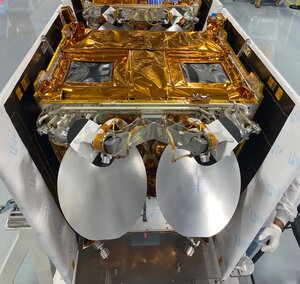Mission management
ESRIN is responsible for managing the operation of ESA’s own Earth Observation satellites once they are in orbit. Each ESA Earth Observation satellite has a Mission Manager and he or she is responsible for the satellite during its operation and for the service ESA offers the many users of satellite data. This entails ensuring mission objectives are met and addressing users’ requirements.
To do this Mission Managers work with those directly responsible for planning and supervising data acquisition and archiving, as well as product generation and dissemination at ESRIN. Mission Managers also liaise with their colleagues at ESTEC and ESOC to resolve any satellite problems that may arise and to request the changes that may be needed to the spacecraft and its instruments to meet requests for specific data.
Earth Observation missions by other space agencies, known as Third Party Missions, also come under an ESRIN Mission Manager. Third Party Missions include some 20 satellites including the French SPOT and US Landsat satellite series, South Korea's KOMPSAT-1 and Japan's forthcoming ALOS mission.
Earth Observation data from ESA missions are made available to users worldwide. ESRIN also negotiates cooperation agreements with other space agencies and satellite operators to ensure that European users have the best access possible to their data. It then implements data acquisition, distribution and exploitation, via the sharing of a multi-mission distributed infrastructure, to provide the services that users require. Its aim is to provide transparent data access conditions for European users to meet all their requirements for data, whether from ESA or third-party satellites.
In general, each mission lasts from between 5 to 10 years. Once a mission is completed and the satellite is no longer transmitting data, it falls to the Mission Manager to ensure that data remain accessible for long-term exploitation, and to organise and document a thorough evaluation of the mission to record the highlights. These lessons are then fed into the definition of new mission scenarios for the future.
Acquisition and processing

The many instruments on board the satellites are constantly transmitting data back to Earth. ESRIN is responsible for acquiring raw data from a worldwide set of receiving stations as well as by direct reception via Artemis. It then arranges for these data to be processed and archived so that they are available for use. Raw data can be processed in many different ways by computer software to extract whatever information the end user requires.
Envisat, the world's largest Earth Observation satellite, downlinks tens of gigabytes of new data daily from its polar orbit. The main acquisition stations are ESRIN and Kiruna in Sweden. ESA’s telecommunications satellite Artemis also plays an important role. When Envisat is out of range of the ground stations but within range of Artemis, which is in geostationary orbit, Artemis continues to transmit Envisat data to the ground stations.
Data are not necessarily processed at the station that receives them as raw data are also sent to national space agencies within Europe to be processed. The responsibility for arranging and managing for data to be processed lies with Earth Observation staff at ESRIN.
Data quality

Data are of no use unless users can be sure they are accurate and of the highest quality. Earth Observation staff with technical and engineering backgrounds are responsible for
- product quality assessment and control
- calibration and validation activities for each instrument on board a satellite
- assessing an instrument’s behaviour and performance
- defining the algorithm that is the best arithmetical or computational procedure to process data
- ensuring data meet user’s requirements
checking whether new requirements requested by users necessitate new algorithms
This work also provides vital feedback for future programmes.















 Germany
Germany
 Austria
Austria
 Belgium
Belgium
 Denmark
Denmark
 Spain
Spain
 Estonia
Estonia
 Finland
Finland
 France
France
 Greece
Greece
 Hungary
Hungary
 Ireland
Ireland
 Italy
Italy
 Luxembourg
Luxembourg
 Norway
Norway
 The Netherlands
The Netherlands
 Poland
Poland
 Portugal
Portugal
 Czechia
Czechia
 Romania
Romania
 United Kingdom
United Kingdom
 Slovenia
Slovenia
 Sweden
Sweden
 Switzerland
Switzerland




























